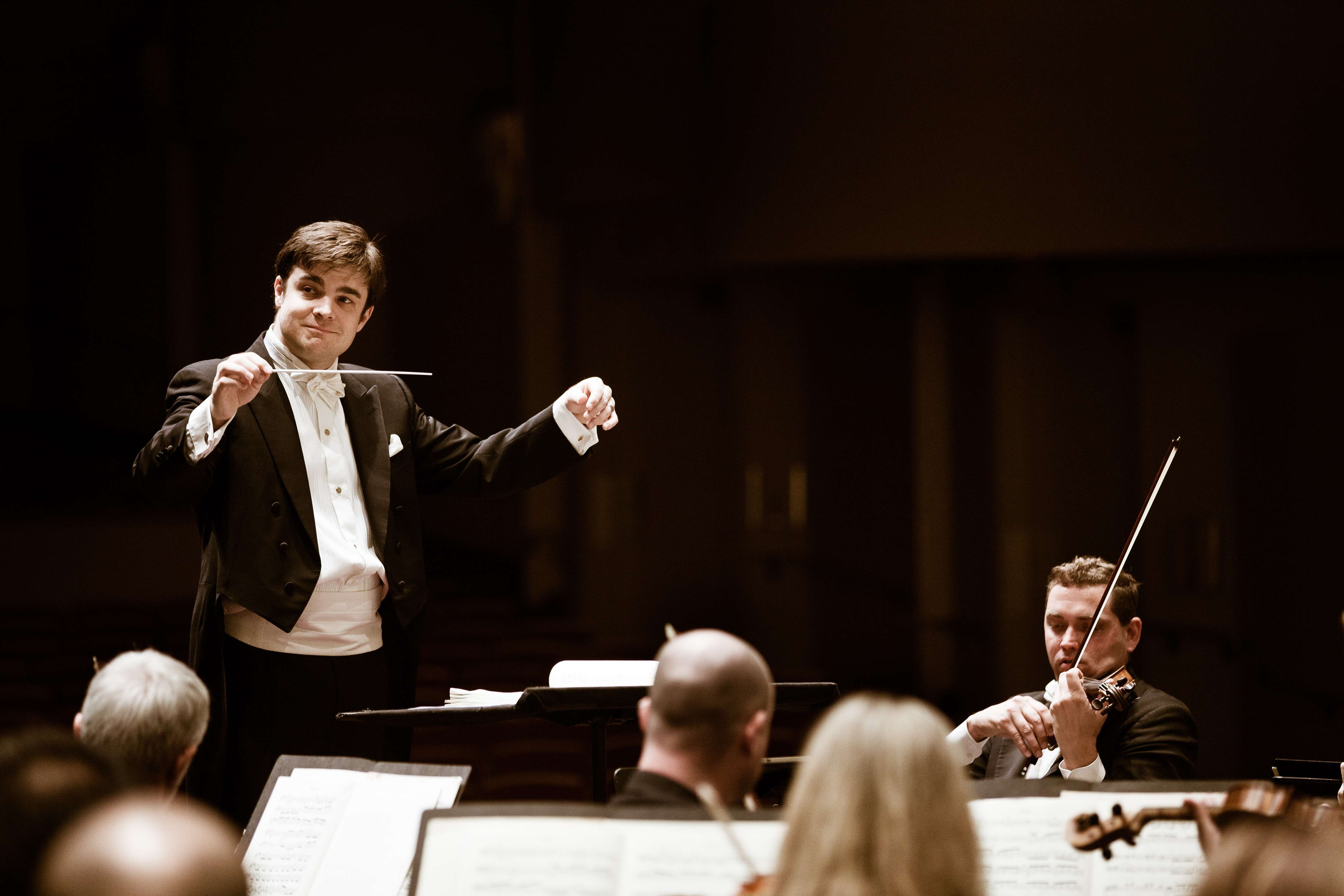|
Back
Round-Trip to Hell Phoenix
Symphony Hall
04/25/2013 - & April 26, 27*, 2013
Franz Liszt: Eine Symphonie zu Dantes “La divina commedia”, S. 109
Antonio Estévez: La Cantata Criolla, “Florentino, el que cantó con el diablo” for Orchestra and Chorus
Daniel Montenegro (tenor), José Adán Peréz (baritone)
The Phoenix Symphony Orchestra and Chorus, Thomas Bookhout (Chorus Master), Michael Christie (Conductor)

M. Christie (Courtesy of Phoenix Symphony)
The Dante “Symphony” might not be Liszt’s best composition, at least according to several revered conductors of the past who have snubbed it. This is not so much the case nowadays and several good recordings are available (Sinopoli, Masur, Haselböck, etc.). Based on Medieval Italian poet Dante Alighieri’s Divine Comedy, Liszt’s two-movement score walks us through a journey to Hell and Purgatory, the latter ending with a Magnificat. The Inferno starts with wild playing by Christie and fluctuating tempos that are somewhat detrimental to clarity, but the excitement, as well as a good sense of strain, are there. Christie ends on a more lyrical tone and sweeping Romanticism. The brass are remarkably aggressive and the strings electrifying. If Hell sounds as nice as this, maybe it is not such a bad place after all. The haunting - and treacherous - climax of Purgatorio is focused and balanced and it does not lack the visceral passion that is often missed by many a conductor. Principal harp Paula Provo deserves praise for making her instrument sound so beautifully evil and mocking at the end of the doomed lovers’ interlude. Likewise, kudos to principal horn Gabriel Kovach for a wistful solo. The women chorus in the concluding Magnificat of the Purgatorio is luminous, crystal clear and slightly sung on the sorrowful side. The Dante Symphony ends in the original molto pianissimo version.
Venezuelan composer Antonio Estévez (1916-1988) is best remembered for his Cantata Criolla, or Florentino, the One who Sang with the Devil offered after intermission. Composed in 1954 and based upon a poem by Alberto Arvela Torrealba (1905-1971), it celebrates the dusty, perilous, mysterious Venezuelan llanos (plains) where a singing contest takes place between a brazen coplero (a troubadour of the llanos) and the devil. This piece is rarely performed other than in Venezuela where it is regarded as one of the most prominent works of the 20th century in this country. In 2010, however, conductor Gustavo Dudamel (a Venezuelan himself) inaugurated his tenure as musical director of the Los Angeles Philharmonic with La Cantata Criolla. To our knowledge, only one recording exists by the Simón Bolívar Symphony Orchestra of Venezuela under the label Dorian Discovery. All good reasons to program this work and we are grateful to Phoenix Symphony for exploring a lesser known repertoire. Michael Christie pens a dynamic, colorful performance, navigating assertively through what appears to be a fairly complex orchestral texture. American tenor Daniel Montenegro and Mexican baritone José Adán Pérez create a real sense of drama. The immediacy of their fierce singing is like bull and matador wringing and stabbing at each other with vivid self-confidence. The Phoenix Symphony Chorus is well prepared and displays an excellent sense of sustained lines with cohesive power and precision.
In our times of abominable orchestral timidity, Christie is not afraid of striking effects and grand rhetoric now and then. The delivery of both pieces is unbridled, drama-laden and full-blooded. No wonder the audience responded with unabashed enthusiasm.
Christian Dalzon
|